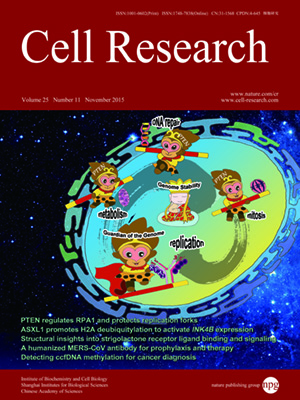
Volume 25, No 11, Nov 2015
ISSN: 1001-0602
EISSN: 1748-7838 2018
impact factor 17.848*
(Clarivate Analytics, 2019)
Volume 25 Issue 11, November 2015: 1187-1188
RESEARCH HIGHLIGHTS
aBETting therapeutic resistance by Wnt signaling
Carl G Engelke1,2 and Arul M Chinnaiyan1,2,3,4,5
1Michigan Center for Translational Pathology Ann Arbor, MI 48109, USA
2Department of Pathology Ann Arbor, MI 48109, USA
3Department of Urology, University of Michigan, Ann Arbor, MI 48109, USA
4Howard Hughes Medical Institute, University of Michigan Medical School, Ann Arbor, MI 48109, USA
5Comprehensive Cancer Center, University of Michigan Medical School, Ann Arbor, MI 48109, USA
Correspondence: Arul M Chinnaiyan,(arul@umich.edu)
In a recent issue of Nature, two reports investigate the mechanisms by which acute myeloid leukemia (AML) develops resistance to therapeutic inhibition of bromodomain and extra-terminal (BET) proteins. Small molecules in this class such as JQ1 and I-BET bind and inhibit the bromodomain modules — deep, hydrophobic pockets that recognize acetylated lysine residues on histones and transcription factors — to disrupt the productive transcription of key proliferative genes1. In particular, BET inhibition has emerged as one of the most promising strategies to target the potent oncogene MYC at the transcriptional level2, although other action models have emerged including disruption of the binding of BRD4 to super-enhancers3 or to transcription factors4. Now two groups, working from different angles, have evaluated a comprehensive set of models covering both intrinsic and acquired resistance to BET inhibition, and Wnt signaling emerged as a common theme and a key player mediating resistance to BET inhibitors.
10.1038/cr.2015.127
FULL TEXT | PDF
Browse 2017


